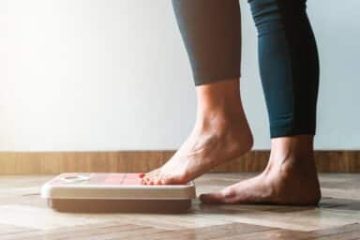Definition and Characteristics
Olympic weight plates are specially designed weight plates that fit on Olympic barbells, characterized by a standard 2-inch (50mm) diameter hole at their center. This allows the plates to be easily loaded and unloaded from the barbell, making them ideal for various strength training and lifting exercises. The 2-inch hole is a defining feature that distinguishes Olympic plates from standard weight plates, which typically have smaller holes (1-inch) and are not compatible with Olympic barbells.
Primarily used in strength sports such as weightlifting and powerlifting, Olympic weight plates are also common in commercial gym setups. They are designed to handle much heavier loads than standard plates, making them essential for serious athletes and fitness enthusiasts. Leadman Fitness offers a selection of Olympic weight plates built to handle heavy lifting, providing durability and reliable performance for both professional athletes and gym owners.
Types and Materials Used
Olympic weight plates come in several varieties, each catering to different training needs and preferences. The most common materials used for these plates include rubber, urethane, and cast iron. In addition, two specific categories—Rubber Weight Plates and Change Plates—are especially popular in many training environments due to their practical benefits.
- Rubber-Coated Plates: Rubber-coated Olympic plates are one of the most popular types due to their durability and noise-reducing features. These plates are usually made from cast iron or steel and are coated with high-quality rubber for extra protection. The rubber coating helps to absorb shock when the plates are dropped, reducing noise and protecting both the plates and the flooring from damage. Rubber-coated plates are especially common in commercial gym environments where plates are often dropped during exercises like deadlifts or cleans.
Another benefit of rubber-coated plates is that they are more comfortable to handle. The rubber provides a softer grip compared to raw metal plates, making them easier to lift and adjust during workouts. Rubber-coated plates are also generally more affordable than urethane-coated plates, offering a good balance of price and durability. - Urethane-Coated Plates: Urethane-coated plates are similar to rubber-coated plates but are made from a more advanced, durable material. Urethane is a high-performance plastic that is resistant to wear, cracking, and fading, making it an excellent choice for those who need plates that will withstand heavy use over time. These plates typically have a shiny, sleek appearance and are known for their high resistance to abrasions and extreme temperatures.
Urethane-coated Olympic weight plates are often favored for their premium look and extended lifespan. Although they tend to be more expensive than rubber-coated plates, they provide superior protection for floors and have a longer service life. Urethane plates are especially popular among athletes who engage in repetitive, high-intensity training and require plates that can handle frequent dropping and rough handling. - Cast Iron Plates: Cast iron is the most traditional material used for Olympic weight plates. These plates are made from solid cast iron and usually have a matte black finish. Cast iron plates are generally the most affordable option compared to rubber or urethane-coated plates, making them an ideal choice for budget-conscious buyers.
While cast iron plates are incredibly durable and can withstand substantial wear and tear, they tend to be louder when dropped, and they can also damage floors and equipment due to their hardness. They do not have the added shock-absorbing features of rubber or urethane plates, making them less suitable for environments where plates are frequently dropped. However, they remain a popular choice due to their cost-effectiveness and traditional appeal.
Thickness, Durability, and Weight Range
Olympic weight plates are built to handle heavy lifting and are designed for maximum durability. These plates are generally thicker than standard weight plates, especially at higher weights, to accommodate the larger loads they are intended to carry. The thickness of each plate varies depending on its weight, with smaller plates like the 2.5 kg (5.5 lb) plate being thinner, and larger plates like the 25 kg (55 lb) plate being thicker.
- Weight Range: Olympic weight plates come in a wide range of weights, allowing athletes to gradually increase the load as their strength improves. The typical weight range for Olympic plates starts from 2.5 kg (5.5 lbs) and can go all the way up to 50 kg (110 lbs) or more, depending on the plate design. Smaller plates are ideal for beginners and lighter lifters, while larger plates are designed for heavy lifters and professional athletes.
Some of the most commonly used weight increments for Olympic plates include 2.5 kg (5.5 lbs), 5 kg (11 lbs), 10 kg (22 lbs), 15 kg (33 lbs), 20 kg (44 lbs), and 25 kg (55 lbs). This allows for precise adjustments when adding weight to the barbell, offering athletes greater flexibility in their workouts. - Durability: The durability of Olympic weight plates is one of their key selling points. These plates are designed to withstand years of heavy use, even in harsh conditions like those found in commercial gyms. The materials used, such as rubber, urethane, and cast iron, are all chosen for their ability to resist wear and maintain their structural integrity under heavy loads. Rubber and urethane-coated plates are particularly known for their long lifespan, making them a smart investment for those looking for equipment that will last.
Why Choose Olympic Weight Plates?
Olympic weight plates are essential for athletes who need heavy-duty, reliable equipment for strength training. Whether you are training for powerlifting, Olympic lifting, or general strength development, these plates offer the necessary durability, versatility, and weight options to support a variety of workouts.
With materials like rubber and urethane offering protection against damage and wear, and the convenience of change plates providing small incremental adjustments, Olympic weight plates are a top choice for commercial gyms. They not only support heavy lifting but also help athletes achieve progressive overload while maintaining safety and longevity in their equipment.




